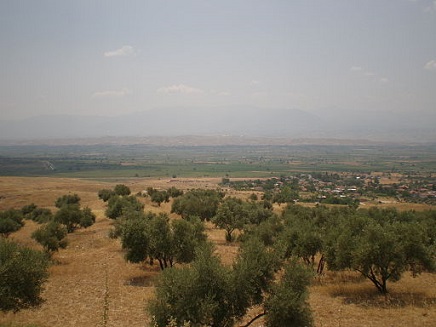Rural population: Difference between revisions
J.williams (talk | contribs) No edit summary |
J.williams (talk | contribs) m (1 revision imported) |
(No difference)
| |
Revision as of 21:31, 26 August 2015

Rural population refers generally to the population in areas that have a lower population density than urban areas and are overall more spread out than urban areas. These areas are typically more agricultural than urban areas.
Rural population is generally higher in poorer countries than in more developed countries. In some of the least developed countries, it is the rural population that dominates. At times, the percentage of people living in rural areas compared to the urban population has been an indication of the overall wealth and development of a country. Going forward, as world population increases, organizations like the United Nations predict that the percentage of people living in rural areas will steadily decrease as people migrate from rural areas into cities.[2]
Effects of Decreased Rural Population
The shrinking of rural populations has both positive and negative side effects in terms of what rural-urban migration does to quality of life. Although it would seem that there are only negative side-effects, that is not entirely the case. As it is, earnings from non-farming activities are estimated to account for 30-50% of rural household income in Africa and about 60% in Asia.[3] Since rural populations do not rely completely on their rural income, the slow rural-urban migration can act as a form of income diversification that can support farming innovation. Small family farms that are well connected to markets can compete with larger, more commercial, farms. In addition, the urbanization provides people with better access to previously difficult to access amenities such as health care, social services, and higher-income jobs. This, in time, works to reduce the issue of rural poverty.
However, there are negative side effects to this migration. It removes some farmers from the agriculture industry, causing a declining ratio of food producers to food consumers, and although people may move to cities in hopes of finding higher income jobs, the large influx of workers to the cities may make it difficult for people to find jobs that pay well despite their qualifications.
For more information, please see the UN's World Population Division.
See also: Urban population
Interactive Map
The heat map below can be used to show which countries have a comparatively large portion of their population living in rural areas. A more yellow colour indicates a larger portion of the population living in the countrysides. Roll over the map to look at the names of the countries and the percentage of their population that lives in rural areas.
References
- ↑ "Rural area in Denizli" Licensed under CC BY-SA 3.0 via Wikimedia Commons - http://commons.wikimedia.org/wiki/File:Rural_area_in_Denizli.jpg#mediaviewer/File:Rural_area_in_Denizli.jpg
- ↑ United Nations Population Division. (2015, Feb. 18). Country Profiles [Online]. Available: http://esa.un.org/unpd/wup/Country-Profiles
- ↑ Gordon McGranahan et al. (2015, Feb. 18). Urbanization and its Implications for Food and Farming [Online]. Available: http://rstb.royalsocietypublishing.org/content/365/1554/2809#sec-20

